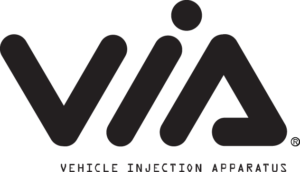
BG Emissions Service VIA®
PN E101-7090
INSTRUCTIONS
WARNING!
- Pressurized equipment, systems, or tanks can break or leak.
- Do not exceed the maximum pressure rating of the equipment.
- Pressurized fluid striking the body can cause personal injury.
- Flammable fluids such as diesel fuel, gasoline, propane, etc., can ignite or explode and cause injury.
- Fluids can leak or escape.
- Use only in well-ventilated areas.
- Breathing vapors or fluids from leaks can cause illness or injury.
- Pressurized air or fluid stream can propel dust or particles.
- Do not direct air or fluid stream at your body or at others.
- Flying particles, air, or fluid entering the body can cause injury.
- Improper use or maintenance of pressurized equipment can cause leaks or rupture.
- Leaking of pressurized equipment can cause injury.
- Read the product Safety Data Sheet before handling any BG product.
- WARNING! Use EXTREME CAUTION when working with the emissions system to prevent burns.
WARNING! In vehicles with excessive mileage and/or carbon deposits, removal of carbon may expose weaknesses in the emissions system that are not present before servicing. It may be necessary to remove these components and clean them separately using BG Emissions System Cleaner, PN PD20. Visual inspection before service on vehicles with high mileage is recommended.

- Hanger
- Fill Cap
- Pressure Release
- Gauge
- Supply Hose with ball valve
- Pressure Regulator
- Shop Air Connect
Emissions System Service Adaptor Set
PN E101-6824

BG Emissions System Service
PROCEDURE
- If the engine is hot, the emissions system must be cooled before beginning service.
- Determine the required adaptor and connect to the emissions system sensor port before the catalyst within the emissions—before the diesel oxidation catalyst (DOC) in diesel vehicles and before the three-way/four-way catalytic converter in gasoline (petrol) vehicles.
Diesel Emissions System
- Exhaust gas from engine
- Adaptor connection point
- Temperature Sensor
- Diesel Oxidation Catalyst
- Temperature Sensor
- Diesel Particulate Filter
- Exhaust out

Gasoline (Petrol) Emissions System

- Exhaust gas from engine
- Adaptor connection point
- Oxygen/Temperature Sensor
- Catalytic Converter
- Gasoline Particulate Filter
- Exhaust out
- Attach the BG Emissions Service VIA® Supply Hose to the adaptor. Make sure the ball valve on the Supply Hose is closed.
- Unscrew the Fill Cap on the BG Emissions Service VIA® and fill with BG Emissions System Cleaner, PN PD20. Per engine size, use the following fill:
- 6.0L and larger: 6 quarts, two fills of 3 quarts each recommended
- 3.0L–5.9L: 4 quarts, two fills of 2 quarts each recommended.
- 2.9L and smaller: 2 quarts
- Reinstall the Fill Cap and place BG Emissions Service VIA® close to the working area. Connect shop air. Set air pressure to 60 PSI.
- Start the engine; the service is performed with the engine idling.
- Open the ball valve on the Supply Hose and administer the product until the canister is empty.
Note: If more than 4 quarts are to be used, turn the Pressure Regulator to 0 (counterclockwise). Press and hold pressure release button until gauge reads 0 PSI. Repeat steps 4–8. - Turn the engine off.
- Turn the ball valve on the Supply Hose off, turn the Pressure Regulator to 0 (counterclockwise), and press and hold pressure release button until gauge reads 0 PSI.
- Let product soak for 15 minutes.
- Repeat steps four through ten using BG Emissions System Rinse, PN PD21. Per engine size, use the following fill:
- 6.0L and larger: 3 quarts
- 3.0L–5.9L: 2 quarts
- 2.9L and smaller: 1 quart
- When the cleaner and rinse have been administered, disconnect the BG Emissions Service VIA®, remove the adaptor, and reconnect the temperature sensor. Reset any engine codes. The vehicle should then be set to run a manual regeneration cycle. If that is not possible, the vehicle should be driven at highway speeds (or in the case of non-highway equipment, operated under a load) for approximately 30 minutes. This is necessary to combust any material within the emissions system and downstream within the particulate filter (DPF/GPF). This should be done immediately after the service.
R00
©2025 BG Products, Inc. • Wichita, Kansas • bgprod.com • Made In USA
